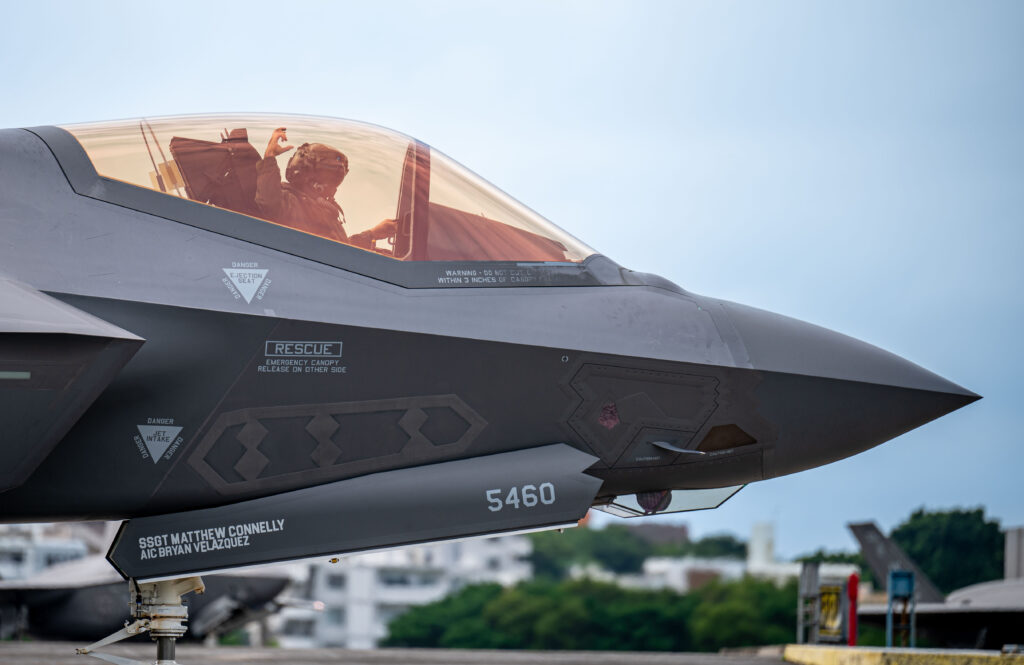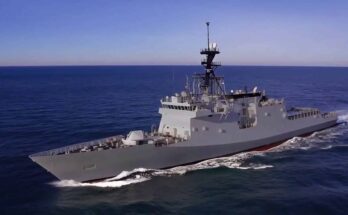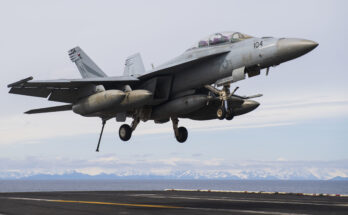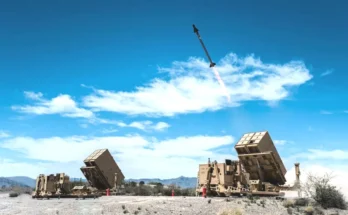
Following a record-breaking month of F-35 deliveries, Lockheed Martin is on track to reach the upper end of its annual delivery target of 170 to 190 aircraft. During a January earnings call, Lockheed CEO Jim Taiclet confirmed that the company plans to deliver more F-35s during the next several years than its current annual production rate of 156 fighters.
This week, the F-35 Joint Program Office (JPO) announced that 23 F-35s received delivery certification in April–the highest monthly total in the program’s history. The news suggests growing momentum in the second quarter, following Lockheed’s first-quarter report, which confirmed 47 F-35s delivered from January through March. With April and first-quarter deliveries factored in, the airframer is well positioned to achieve its high-end goal for 2025.
If Lockheed Martin can turn over 190 F-35s this year, it would mark the highest delivery total of the decade and represent a 64 percent and 53 percent increase over 2023 and 2024 figures, respectively.
However, the recent delivery boom requires context. Lockheed Martin is now delivering a mixture of new-production and previously built aircraft from storage after a series of missteps and delays related to difficulties integrating the Technology Refresh 3 (TR-3) package. As a result, approximately 18 percent of this year’s deliveries are expected to come from previously built units.
TR-3 software and hardware integration issues forced a halt in DoD deliveries in mid-2023, dragging annual deliveries down to just 98 aircraft, significantly below the more than 140 delivered in both 2021 and 2022. In July 2024, the Pentagon began accepting “truncated” TR-3 fighters, but full combat capability might not be ready until next year.
Truncated F-35 deliveries continue to result in partially withheld payments from the Pentagon, but progress on TR-3 is narrowing the penalty. Lockheed has not disclosed F-35-specific losses in recent quarterly earnings reports, but the company did cite a $700 million revenue shortfall in Q3 last year tied to the program.
Still, April’s banner deliveries mark a significant win for the F-35 program, especially in the face of continued weariness abroad and the looming potential of tariff effects. For now, Lockheed Martin and the JPO can breathe a short sigh of relief.
Join Forecast International at the Paris Air Show to gain valuable insight into the evolving dynamics of the global defense market. Traditionally regarded as insulated from broader economic fluctuations, the defense sector is now increasingly impacted by global economic forces. Tariffs, trade disputes, and rising economic nationalism are introducing new complexities that affect the stability, cost-efficiency, and resilience of critical defense programs.
For over 50 years, Forecast International has been a trusted authority in aerospace and defense intelligence. Our mission is simple yet vital: to equip industry leaders with the data-driven insight and strategic foresight needed for confident, informed decision-making. Visit us at Hall 3, Booth C164 to learn how our expert analysis can strengthen your planning and elevate your strategy.
Schedule a time with Jon in Paris.
A former naval officer and Seahawk helicopter pilot, Jon currently leads the Military Aerospace and Weapons Systems group at Forecast International. He specializes in current and emerging military fixed and rotary-wing aircraft. With over a decade of experience in military aviation, operations, and education, he forecasts a diverse range of defense and naval systems.
Influenced by his time as a former Presidential Management Fellow and International Trade Specialist at the Department of Commerce, Jon gained insights into government operations and global markets.
Before joining Forecast International, he served as an NROTC instructor and Adjunct Assistant Professor at the University of Texas, teaching undergraduate courses in naval history, navigation, defense organization, and naval operations and warfare.





